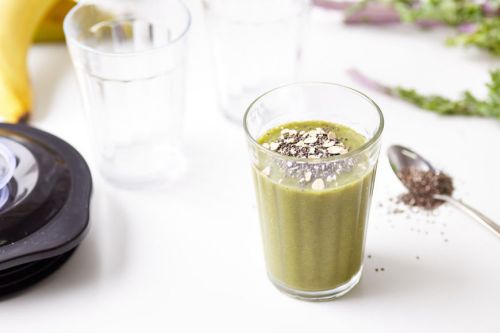Wheatgrass is the OG smoothie add-in, but what does it actually do? Check out this video.
Before acai bowls became a Thing, before “mylk” was an accepted spelling, there was wheatgrass, the OG wellness ingredient. Walk into any juice shop in the ’90s and you would find pots of it ready to clip and be added to your blended order.
While wheatgrass have been talked about for decades (and is generally considered safe to eat), registered dietitian Tracy Lockwood Beckerman, RD, says you may want to hold your horses before grazing on this grass. “Wheatgrass is typically eaten raw, and raw wheatgrass can be contaminated with harmful bacteria and organisms from the soil,” she says in the latest episode of Well+Good’s YouTube series, You Versus Food. This can lead to potential allergic reactions, she says, which is why it’s important to make sure that the wheatgrass you munch on is organic.
What’s more, Lockwood Beckerman points out that because wheatgrass comes from a wheat plant, it can contain gluten if combined and processed with other parts of the plant—so keep that in mind when shopping if you have Celiac or are otherwise not eating gluten. (Pure wheatgrass on its own is gluten-free, she says.)
If you’re wondering whether all of this means wheatgrass is still worth adding into your wellness routine, Lockwood Beckerman gives her verdict in the video above. Check it out to find out if this is a healthy habit with staying power—or if it should be left in the past.
Speaking of healthy food verdicts, here’s the deal on if avocados are worth all their hype and if cheese is considered healthy.
Sign Up for Our Daily Newsletter
Get all the latest in wellness, trends, food, fitness, beauty, and more delivered right to your inbox.
Got it, you've been added to our email list.











